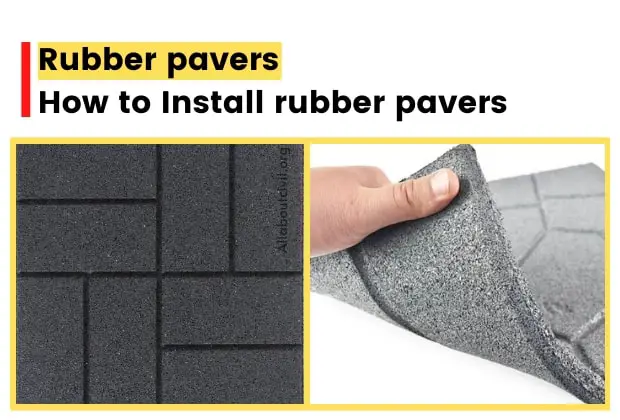What are rubber Pavers?
The modern day innovation keeps us amazed everyday, apart from traditional pavers like brick pavers, concrete pavers and stone pavers etc. Rubber pavers are made from the recycled materials like tires.
Rubber pavers are eco-friendly and can last for longer duration, It is also tear resistant.Much affordable when compared to other pavers.
Advantages of Rubber Pavers
- Rubber pavers are slip resistant can be used in wet areas.
- They are more shock absorbent than the stone pavers.
- Low chance of cracking and chipping.
- These are environmental friendly as they are recycled from tires.
- Rubber pavers are durable and requires less maintenance.
- Cost effective when compared to other paver.
Disadvantages of Rubber Pavers
- The durability as not been fully identified.
- Comes in different colour but the finish is not attractive when compared to other pavers.
Important points to consider before installation of rubber pavers
- Don’t let the rubber pavers to get wet before installation as it absorbs the water result in expanding and makes installation difficult.
- Rubber paver must not be exposed to sunlight for too long as it may cause thermal expansion or contraction.
- Before installing keep them covered in order to avoid chances of absorbing dust or paint if any by side.
Also Read – Vitrified Tiles-Properties| Advantages | uses
How to install rubber pavers
Rubber pavers can be installed on a existing surfaces like stone, concrete and wood,by following some additional steps, you can also install rubber pavers on grass or dirt surface.
1. Measurements and Materials
Before installing rubber pavers one must consider taking the measurement of the area in order to estimate required quantity of the materials.
Area measurement gives you an estimate idea of how many rubber paver blocks you need. The no of blocks per Sq foot varies based on the shape and size of your preferred pavers.
2. Area Preparation
The area where you’re going to install rubber paver must be leveled and a strong base must be provided.
If you’re installing rubber pavers on patio or on dirt it is recommended to provide a good base. The area must be excavated thoroughly , a layer of crushed stone to be laid in order to allow freely flow of moisture.
Incase of solid surface area like concrete, the preparation process is little different,The area must be clean without any stone or mud debris and it must dry before installing.
3. Laying of Rubber Pavers
After completing above steps now you’re ready to lay the rubber paver blocks,Before installing you must be sure to from where to start either from centre or from middle.
If rubber paving is done outdoor then it is required rubber paver adhesive in order to resist temperature variation.
Also Read- Terrace Garden Design and Construction Process

